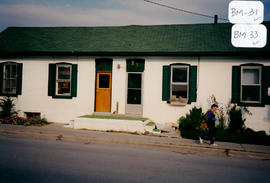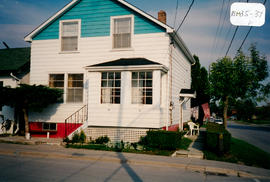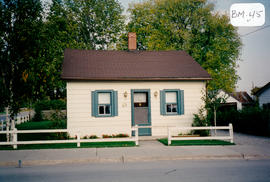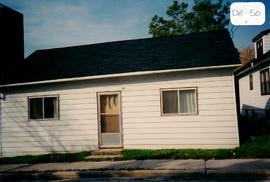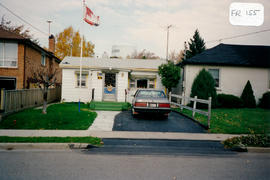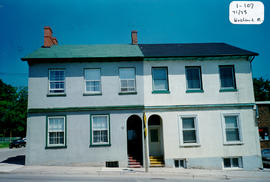- CA BWGPL GJ-HB-2017-03-17-06
- Item
- 1995
Parte de George Jackson fonds
The mid-block building located at 31/33 Bingham St. was built around 1880 in the Neoclassical Duplex style. George “Duke” Lowe built and rented the north half (31), and he and his family lived in the south half (33). He was a farmer who raised cows and pastured them on a vacant lot on the south side of Centre Street. He also cut marsh hay, raised pigs, had an ice house, and delivered ice. He started the first garbage pick-up in Bradford. Ted Bulpit and his wife and son (Ted) lived at 31 Bingham St. for many years.
The six-bay structure with one-storey (narrow) rear wings is set close to the street. Unlike most Neoclassical buildings which have two storeys, this is only a single-storey dwelling. It has a shallow-pitched, gable roof and a formal, symmetrical façade. The slightly-raised entrances are paired in the centre of the façade and each one has a parged-stone entrance platform with steps. Both doors (not original) are set into high, segmented arch openings with glass transoms. The original glass has been replaced with a solid panel. This building has small window openings with low floor to ceiling heights. The front windows (with high sills) are set into segmented arch openings with plain, wood frames and sills. A 2/2 window at the far north end is original, but the other windows are more recent replacements. The shutters are not original. This building has brick, masonry construction with stucco cladding and a parged, stone foundation. There is a cellar. The bricks used for the cladding were salvaged from damaged sections of the Town Hall after the severe storm of 1878. According to the 2000 inventory, this building is a modest example of workers’ housing with some original details remaining. (1, 2, 3)
Sem título

